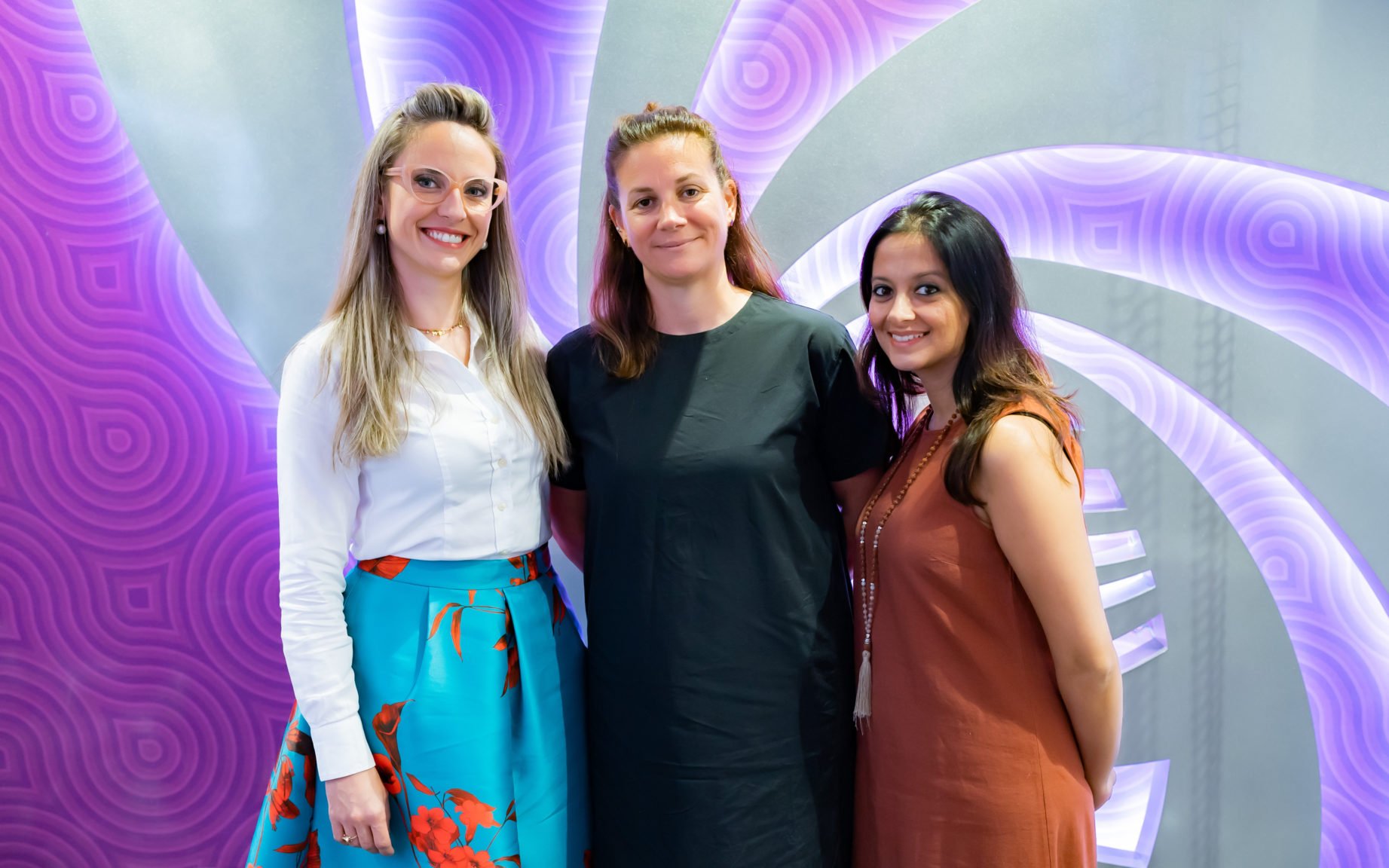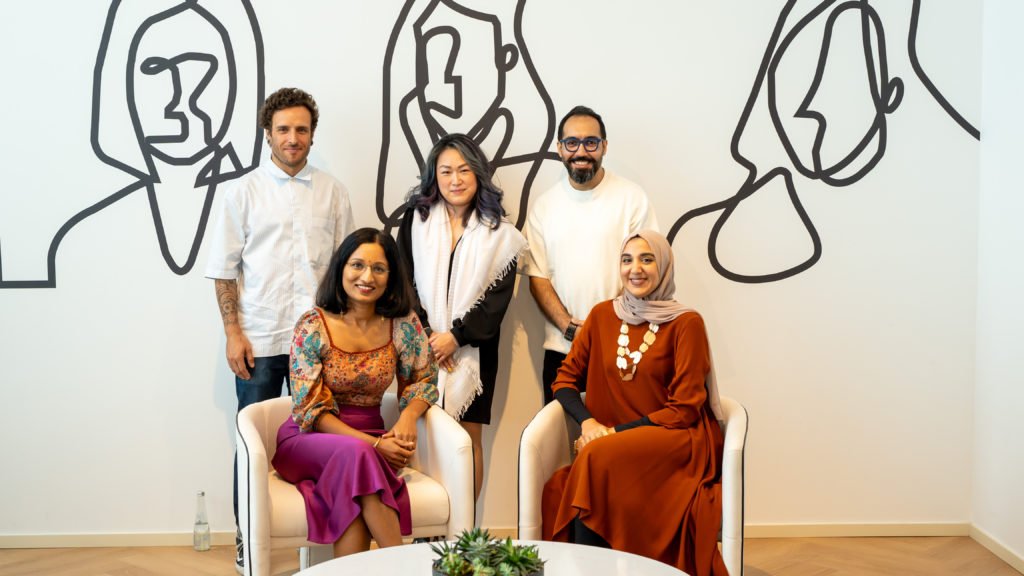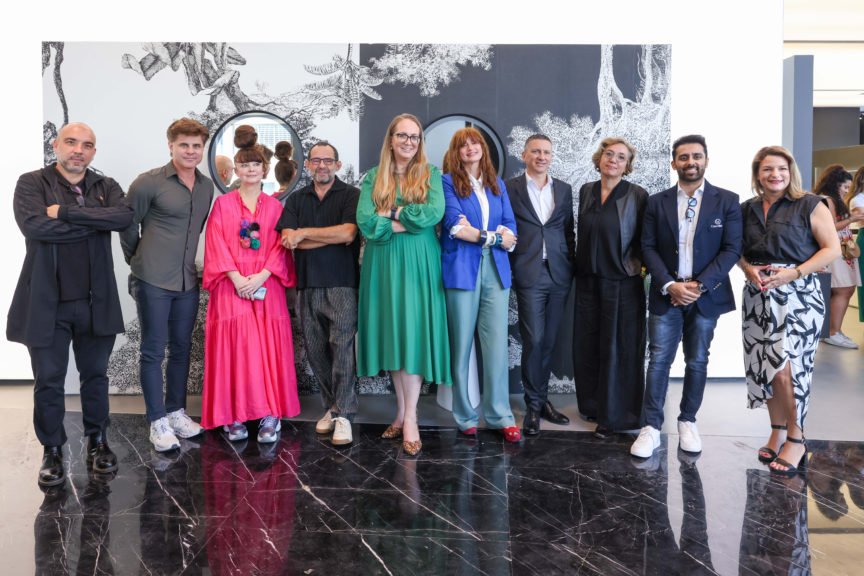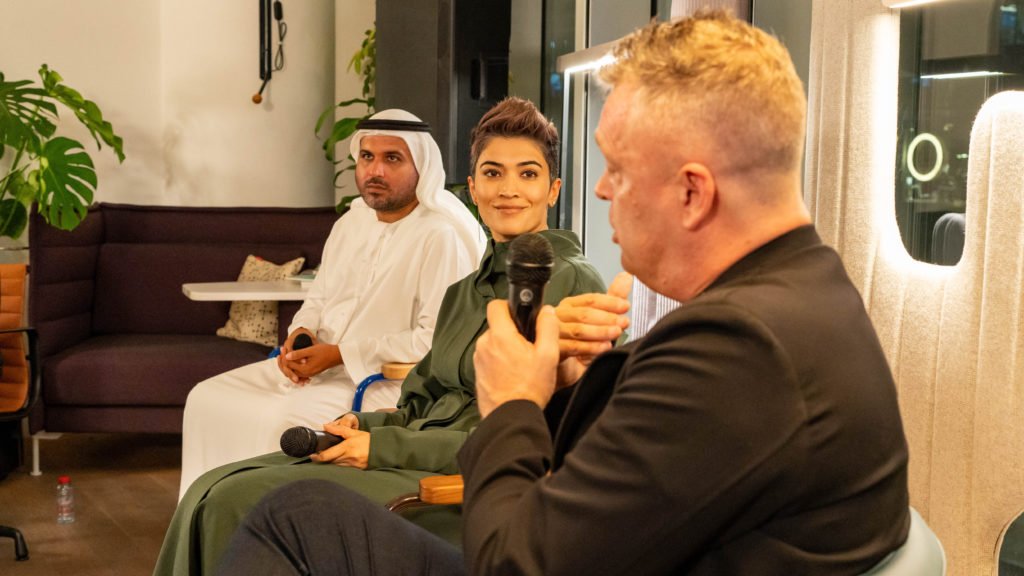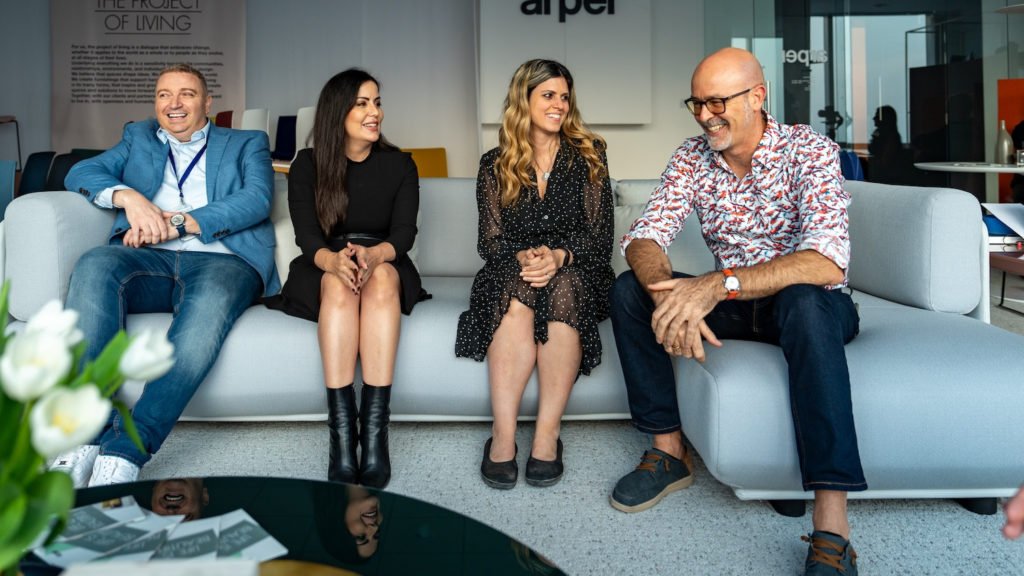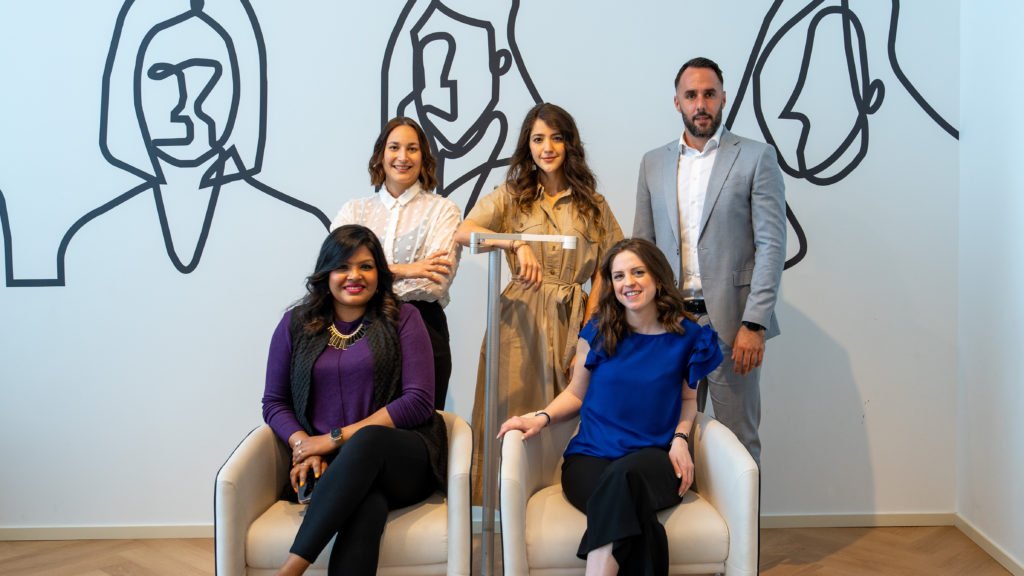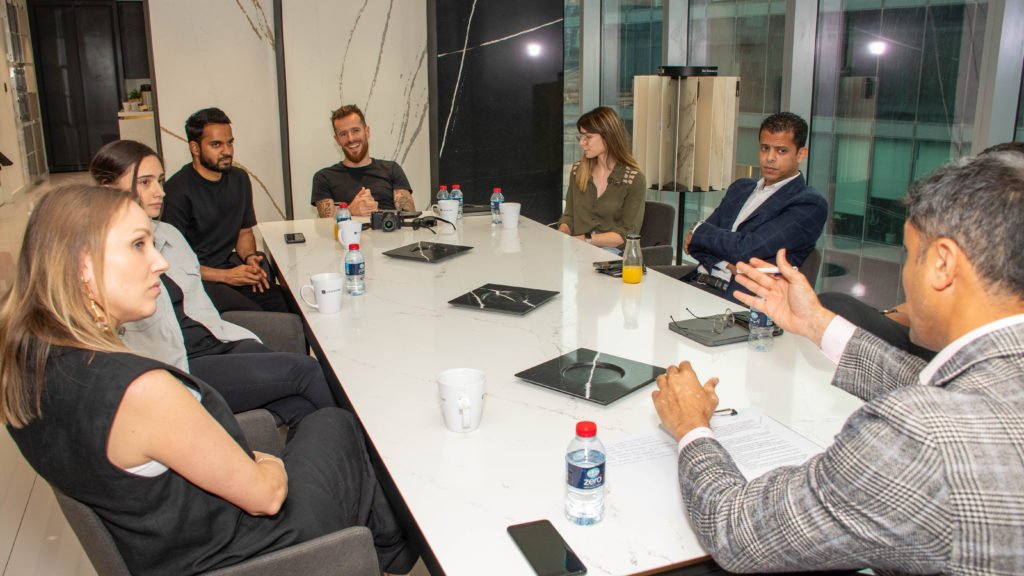Sophie Johnson, Assistant Professor at Canadian University, hosted a podcast session on research-led design, a practice that emphasises the internal qualities, and conditions of interior spaces. Together with guests Sonal Kotecha, Founder of Rumah Interiors and Grammatiki Zamani, Founder of kiklos architects, the team questioned the idea of interiors through experience and practice, and how to establish creative design thinking in a better way that seeks to understand the socio-cultural contexts of people and spaces. Here’s the abridged version of the podcast.
The Panel
From left to right: Sophie Johnson, Assistant Professor at Canadian University; Grammatiki Zamani, Founder & Principal Architect, kiklos architects; Sonal Kotecha, Founder & Design Director, Rumaah Interiors
Defining the Practice of Interior Design
Sonal puts it in clear and concise words – interior designers are functional artists. “You have to inherently be an artist and treat the world or space as your canvas. But at the same time, it’s very much functionally driven by the needs of those experiencing that art on a day-to-day basis”, she says.
“It’s a very interesting field and one we have to be passionate about. At the end of the day, we are shaping the everyday lives of the people we design the spaces for. Interior design is so much more than materials, colours, and furniture. Our designs influence how families live their lives inside their homes, or how co-workers interact in an office space”, explains Grammatiki.
We know what an interior space is on a literal level. On an abstract level, Sonal says interior spaces are our sources of refuge and belonging. You see right at the bottom of Maslow’s hierarchy of needs where it forms the foundation of what human beings need in life.
Grammatiki explains this concept using a very interesting analogy comparing interior spaces to the organs of our body. “We interior designers believe the interior structure are the organs are for the body. You can have an amazing outer structure that looks beautiful, but what’s inside and how it functions matters. The spatial experience and how things inside function matters as much as the outside”, she says
Research-Based Design
So where does research enter the design process?
“Typically the research stage starts before the pre-concept stage where we would essentially have a conversation with our clients. We would kind of give them some homework in advance, ask them to start thinking about what they want from their space, how they use it, and what they would like to improve, and essentially ask them to be mindful of their day-to-day actions and activities and what would make them happier on a day-to-day basis. We push them to think on a deeper level. It’s very much a qualitative discussion that we have, which is led by a series of questions but also leaves it open to see how that dialogue evolves”, says Sonal.
An interesting question comes up here – how does the academic approach to research differ from a practitioner’s?
“It comes down to the initial approach. In an academic environment, we have time to think deeply about the synthesis of the space. But when it comes to doing an actual project, you have time constraints. And time is key. The approach is the same, but the application is different. You learn this over time to start working as a professional designer”, explains Grammatiki.
Her comment is segways smoothly into Sophie’s next topic – the influence of intersecting fields such as psychology and sociology in design.

“We’re fortunate to be able to practice design in the UAE, a country that’s become a melting pot of different cultures. In residential projects, we have to think about the local cultures, the types of people living in these homes, and how they live, and then all these fields and disciplines come into the picture”, replies Grammatiki.
Sonal further adds that “Psychology and interior design and a very much intertwined like on quite an intrinsic level. And I think that being an interior designer, you have to have a huge amount of emotional intelligence, not only to absorb information but to present your ideas. You need to be aware of the personality types you’re dealing with and get them to respond well to what you have proposed. We do use techniques we’ve learned over time to help us do this.”
Sophie continues the discussion with an interesting question – Are there any societal and cultural transformations in the UAE that designers need to be aware of?
Yes! An obvious one. In living rooms, the TV was always the reference point. Today, we no longer design living rooms around TVs because it isn’t the only source of entertainment. In a family of four, you might have a child with an iPad, another child with a mobile phone, and the parents with their computers, all of them being in the same place. But they are all you know, they’re all watching something different. So the TV, the TV room, and the living room is not shaped around the TV anymore. But at the same time, we need to consider that for all these devices, we need to spread sockets around the living space. So yes, there are cultural changes that we have to account for, and we don’t realize how quick and universal they become”.
A key component of a good design process is that it’s iterative and incorporates feedback to improve over time. This is true of interior design as well. “We don’t go out our way to do it, but it’s certainly something that should become the norm. As a design firm we value feedback a lot. It’s like getting an autopsy of your project done and we learn how to do better next time. Over time, we can create a database of our learnings”, says Sonal.
“We make mistakes. Design is rarely perfect, but we make sure we learn from them. We try and get as much as much feedback as we can. There are some things you can only learn after you implement them. Things don’t go 100% as you plan them. But it’s critical to learn them so we don’t repeat them in future projects”, adds Grammatiki.
Documenting and Sharing Research
Design teams tend to be islands of information. As important as it is to share and make information easily accessible, in practice, this is not done as frequently. But new technology and tools are making this easier and faster. “We have to start building bridges to make all our collective knowledge accessible. Maybe a digital platform where we can talk and share our work. No one should be the gatekeeper of this information. It should be shared with the industry and anyone wanting to learn. This is how we all grow together”, says Grammtiki.
“It’s important to share information, not only to the benefit of our like design community but also from a commercial marketing standpoint to lend credibility to a person or firm. I think it’s inherently a part of the process. Verbalizing them formally and documenting these thoughts is key. We get so in our projects, but then these things creep up over time and you realize you’ve not any documentation or sharing”, adds Sonal as she explains the importance of sharing research.
She further adds, “Time is the biggest constraint to this task. If it’s budgeted in, then we certainly do it, like in the pre-concept phase. We do that research on a very qualitative basis with our clients. I do think that there would be a benefit to having a community or platforms for UAE-based designs.”
Article info
Article:
Date added:
2 November, 2022

